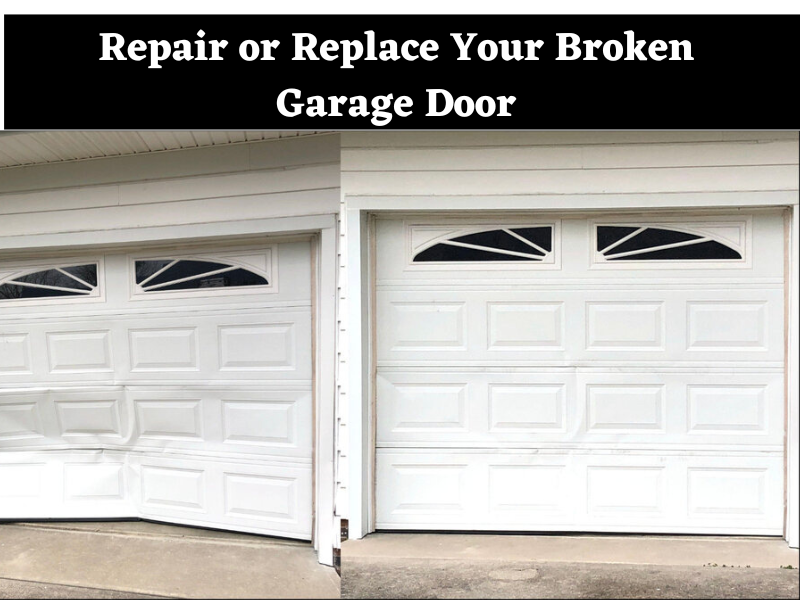Dependable Garage Door Repair for Security and Optimal Performance
Dependable Garage Door Repair for Security and Optimal Performance
Blog Article
Common Garage Door Problems and Just How to Deal with Them
Garage doors are vital for both safety and comfort, yet they usually offer a selection of typical issues that can annoy homeowners. While some issues may appear straightforward to deal with, others might call for an extra nuanced understanding of garage door technicians.
Noisy Garage Door Procedure
A noisy garage door operation can be a significant resource of aggravation for home owners, usually suggesting underlying mechanical problems. Such disruptions might come from different causes, consisting of worn-out rollers, loose equipment, or inadequate lubrication. Identifying the resource of the noise is essential for effective resolution.
Over time, these parts can weaken, leading to grinding or squealing audios as the door moves. Furthermore, loosened bolts or screws in the door device can produce rattling audios throughout operation.
One more contributing element is insufficient lubrication of the door's relocating parts. Applying a high-grade lube to the tracks, springtimes, and rollers can considerably diminish friction and noise. Home owners should do this upkeep periodically to preserve ideal efficiency.
Finally, the garage door opener might additionally generate noise due to its age or mechanical problems. If the noise lingers despite dealing with various other elements, consulting a professional for a complete assessment and possible fixing might be required.
Door Won't Open or Close
Experiencing a garage door that will not open up or close can be extremely irritating and often signals a malfunction within the system. Several factors can add to this concern, and identifying the origin is important for reliable resolution.

Next, examine the safety sensors situated at the base of the door. These sensing units can come to be misaligned or blocked by particles, stopping the door from operating properly. Tidy the sensing units with a soft cloth and ensure they are aligned.
In addition, the garage door's interior elements must be reviewed. Problems such as a busted springtime, damaged rollers, or a damaged opener can hinder motion. If any components seem damaged, it may be advisable to speak with an expert for fixings.
Misaligned Tracks
(Highly Skilled)Misaligned tracks can seriously interfere with the smooth operation of a garage door, causing operational failings such as unequal activity or complete immobilization. This problem typically occurs because of a selection of elements, consisting of damage, unintentional effects, or incorrect installation. When the tracks are misaligned, the rollers can stagnate openly, which not just stresses the motor however likewise positions safety dangers.
If you discover any type of inconsistencies, it is vital to resolve the concern promptly. Carefully touch the track back right into its proper placement making use of a rubber club or a comparable tool, guaranteeing it is straight and degree.
Once the positioning is remedied, retighten the screws to protect the track. For a much more permanent solution, take into consideration enhancing the tracks with extra braces. Routine maintenance, consisting of cleaning the tracks and ensuring rollers are in excellent problem, can stop future imbalances. By attending to misaligned tracks quickly, you can bring back the capability of your garage door and improve its longevity.
Broken Springs
Amongst the numerous elements of a garage door system, broken springtimes are just one of the most usual problems that can considerably hamper its functionality. Garage door springtimes are vital for stabilizing the weight of the door, enabling for smooth opening and closing. When a springtime breaks, it can result in a door that is difficult to operate or, in many cases, completely inoperable.
There are 2 major kinds of springtimes: torsion springs, which are installed over the door, and extension springs, discovered on either side. Indicators of a damaged springtime include a door that won't open up, a visible space in the spring, or a loud noise during procedure. Attempting to operate a garage door with a damaged springtime can create more damage to the door or the opener.
Fixing busted springs is not a DIY job; it calls for specialized tools and experience as a result of the high stress entailed. It is a good idea to consult a professional specialist who can safely replace the springs and make certain the door is effectively stabilized. Regular upkeep and assessments can aid protect against springtime failings and extend the lifespan of the garage door system.
Push-button Control Issues

If the remote still falls short to run, evaluate the garage door opener to make certain that its sensors are clean and unobstructed. Dust, particles, or misalignment may prevent the signal transmission in between the remote and the opener.
Interference from various other electronic devices can also impede remote performance. Guarantee that nearby gadgets, such as wireless routers official website or cordless phones, are not creating disturbances. garage door service. If interference is believed, try relocating these gadgets even more away from the garage door opener
In many cases, the remote might need to be reprogrammed. Consult the maker's guidelines to reset the remote and synchronize it with the garage door opener. If all else fails and the remote proceeds to malfunction, think about consulting a specialist specialist for an extensive inspection and possible replacement of the remote or opener.
Verdict
(Leading Experts)In summary, common garage door troubles can dramatically influence functionality and safety and security. Proactive maintenance and prompt repair services can guarantee optimum performance and long life of garage doors.
Report this page